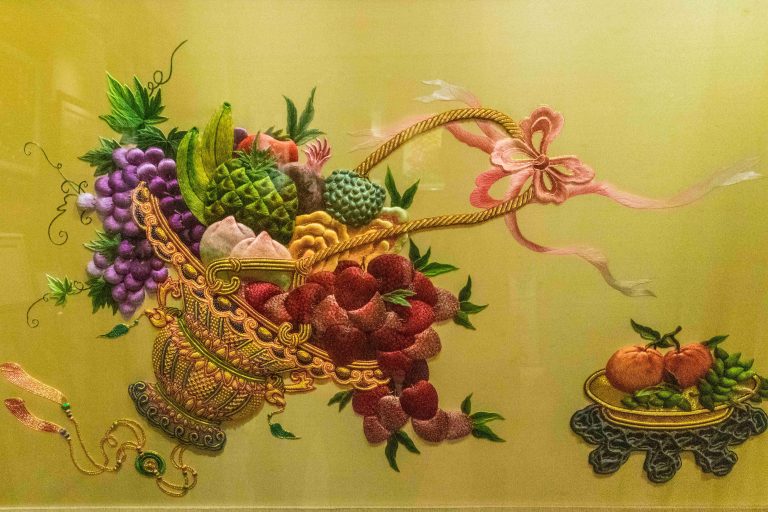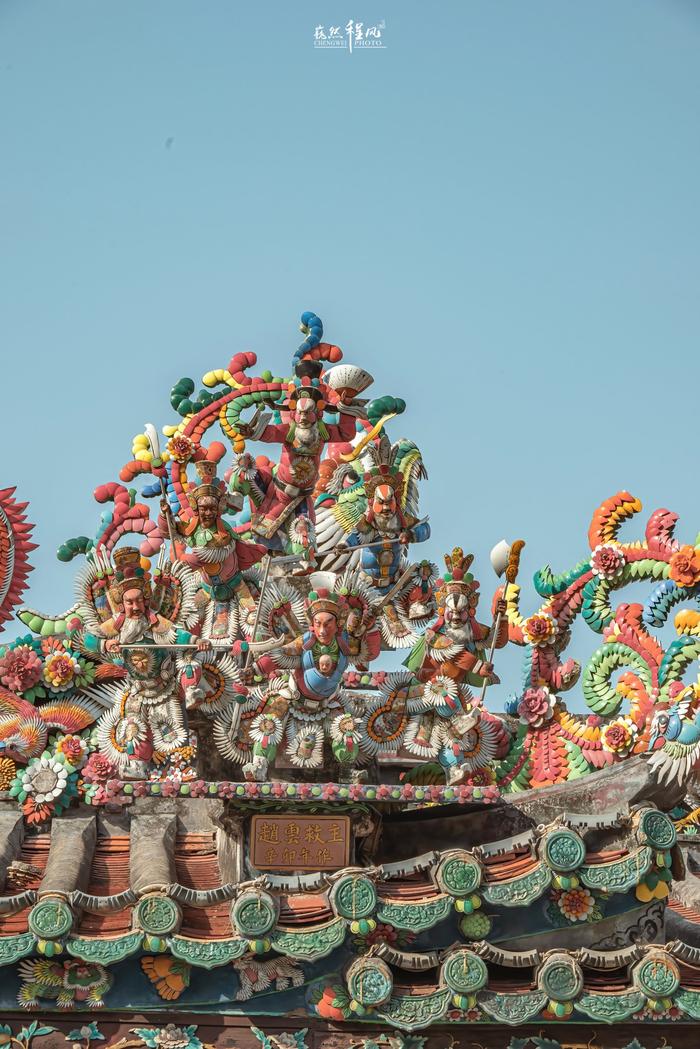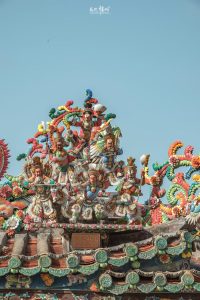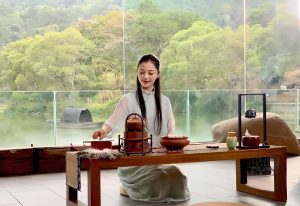Teochew wood carving, also known as Chaozhou wood carving, is a unique art form from South China. This art originated in the Chaoshan region of Guangdong Province. It is famous in China and known worldwide. It is one of China’s four major wood carving traditions. This article tells the story of Teochew wood carving.
Chaozhou is a historic city in Guangdong Province. It is also called the “Province Tail” due to its location. The city is surrounded by mountains on three sides. This unique geography helped Teochew wood carving to thrive. Artisans in Chaozhou were inspired by nature and history.

Ancient Origins: Tang and Song Dynasty Roots of Teochew Wood Carving
Teochew wood carving dates back to the Tang dynasty. Its origins are also seen in the Song dynasty relics. Ancient temples display carved wooden elements from these times. A Tang relic with “grass tail” decoration survives today. The wooden dragon with a bronze bell is from the Song dynasty.
The palace of Xu Fuma was built in the Northern Song. Its wooden decorations use the “grass tail” design. This shows that Chaozhou wood carving existed in ancient times. The art was nurtured in the Tang and Song dynasties. It evolved with each dynasty and grew in skill.

Teochew wood carving reached maturity during the Ming dynasty. The Zhenhai Lou Tower was built in early Ming. Its corridor features 108 carved wooden monkeys. Each monkey shows a different expression and style. This masterpiece marked the maturity of Teochew wood carving.
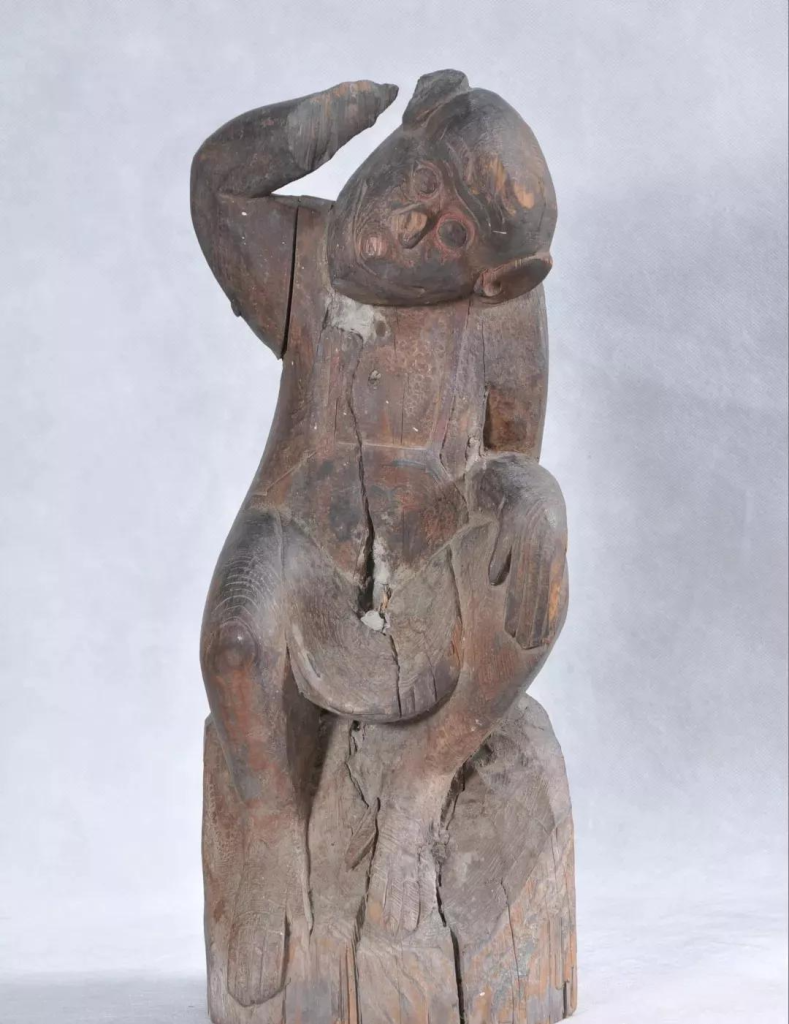
The late Ming era saw new styles in wood carving. A six-sided, seven-story Thousand Buddha Pagoda was created. It combined relief and round carving techniques beautifully. This pagoda is still preserved at Kaiyuan Temple. It marked the start of intricate multi-level wood carving.
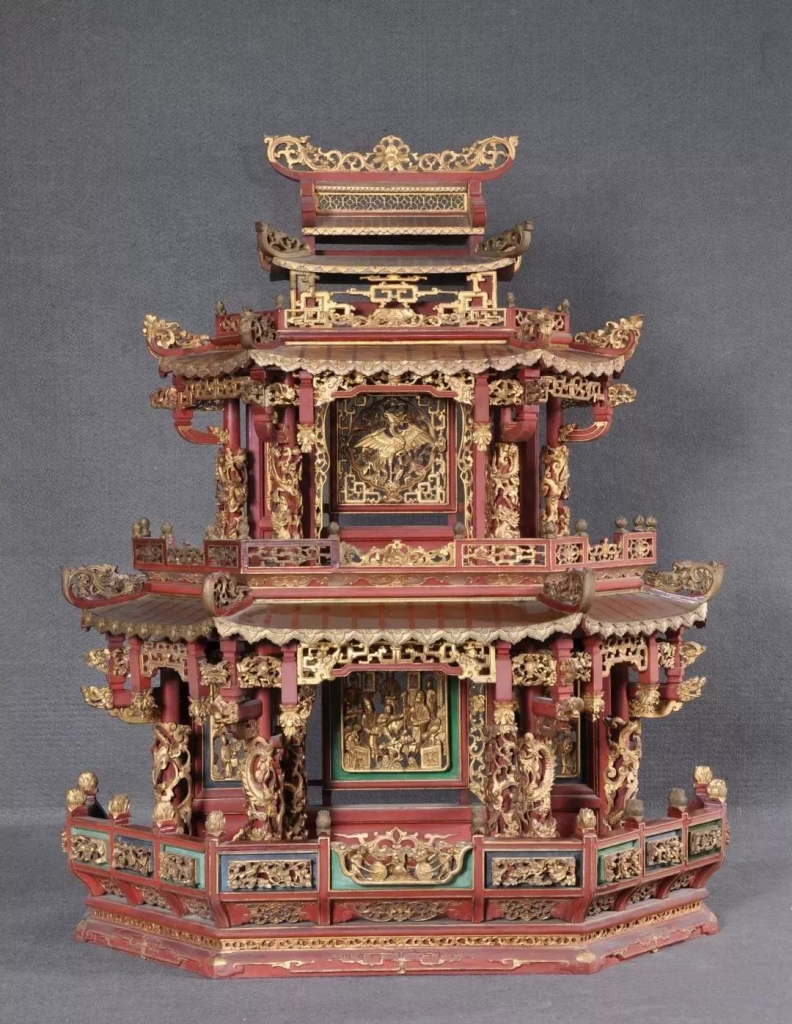
The Qing dynasty was a golden era for Teochew wood carving. Many ancestral halls and temples were built during this time. These buildings still exist in cities like Jieyang and Chaozhou. Rich merchants invested heavily in grand ancestral halls. They sought luxury and beauty in architecture and carvings.
Artistic Techniques and Themes: Exploring the World of Teochew wood carving
Overseas trade boosted the art of Teochew wood carving. Many overseas Chinese returned to build splendid ancestral halls. Wealthy families spent great sums on building projects. They desired elaborate wood carvings for their grand houses. The craft reached its peak during this period.

The Chen Clan Academy in Guangzhou features fine Teochew wood carving. Its wooden decorations are admired for their intricate designs. These works show the high skill of local artisans. The art has a grand reputation and has been recognized as a national intangible cultural heritage.

Chaozhou wood carving features many themes and subjects. Carvings show flowers, birds, and insects in detail. Artists also carve fruits and seasonal elements. They include marine life from rivers and seas. Legends and ancient operas inspire many wood carvings.
Global Recognition: Teochew Wood Carving as a National Heritage Treasure
Today, Teochew wood carving attracts global art lovers. International exhibitions feature these exquisite wooden artworks. Art collectors value these carvings for their rich history. Local workshops teach traditional techniques to young artists. The art form is passed down from generation to generation.
Local carvers often tell stories of ancient artisans. They describe hard work and creative passion. Many families have preserved secret carving techniques. These skills are taught in small local schools. Carvers use simple tools and natural wood. Their work is full of heart and soul. Artisans often share legends of ancient masters. These legends add mystery to each carving piece. The carvers work hard every day with pride. Their art connects past traditions with modern life.

Teochew wood carving themes are diverse and meaningful. They include natural life and ancient myths. Animals, plants, and insects are finely detailed. Local legends inspire carvings of gods and heroes. Each piece tells a story of ancient China. Carvers capture seasonal changes in their art. They show festivals, harvests, and traditional rituals. This art reflects the culture of the Teochew people. Local myths give life to carved symbols.
Techniques and Artistry of Teochew Wood Carving
Teochew wood carving uses many innovative techniques. Carvers work with both relief and round carving. They create deep layers and intricate patterns. Simple tools help achieve detailed results. Every carving is a blend of art and skill. The craft evolves with each new generation. Many techniques are passed down secretly. Workshops in Chaozhou keep these skills alive. Modern artisans blend tradition with creative ideas.
Teochew wood carving is celebrated around the world. It is a treasure of Chinese folk art. Exhibitions in Europe and America show its beauty. Collectors appreciate the detailed craftsmanship of each piece. The art brings people closer to ancient traditions. Future generations will continue this unique craft. Young artists learn and innovate in wood carving. The craft remains a symbol of cultural pride. Chaozhou wood carving inspires many around the world.
In 2006, Teochew wood carving gained national heritage status. It is now a state-level intangible cultural heritage. This honor protects the craft for future generations. It recognizes the hard work of countless artisans. The heritage status has increased global interest. Many cultural festivals now celebrate this art. The art is taught to new craftsmen every year. This national recognition strengthens cultural pride.

The Enduring Legacy: Preserving and Innovating Teochew Wood Carving for Future Generations
Teochew wood carving is more than a craft; it is a legacy. It tells the story of a vibrant culture. Each carving is a work of art and history. The techniques are simple yet incredibly refined. Local artisans honor tradition with every chisel stroke. Their work preserves the spirit of ancient China. Communities treasure these carvings as cultural symbols. It connects people to their roots. It is a source of pride and inspiration. The art will continue to evolve and inspire. This legacy is cherished by both old and young. It remains a vibrant art form today.

Chaozhou wood carving is more than a craft; it is a legacy. It tells the story of a vibrant culture. Each carving is a work of art and history. The techniques are simple yet incredibly refined. Local artisans honor tradition with every chisel stroke. Their work preserves the spirit of ancient China. Communities treasure these carvings as cultural symbols. It connects people to their roots. It is a source of pride and inspiration. The art will continue to evolve and inspire. This legacy is cherished by both old and young. It remains a vibrant art form today.
Related reading:Chao Embroidery: Teochew’s Golden Thread of Heritage

